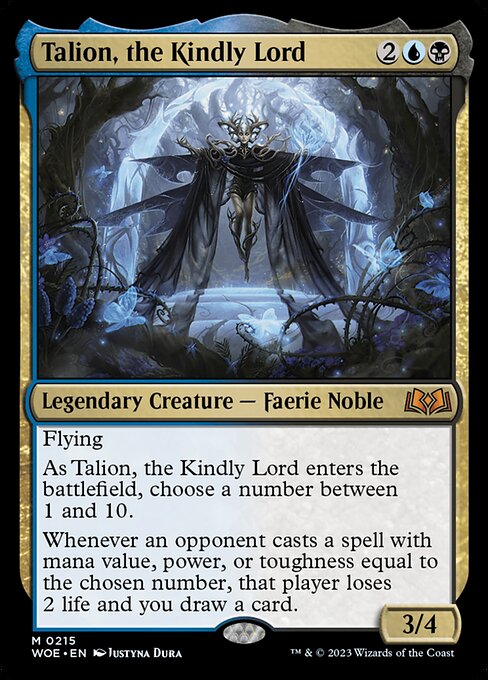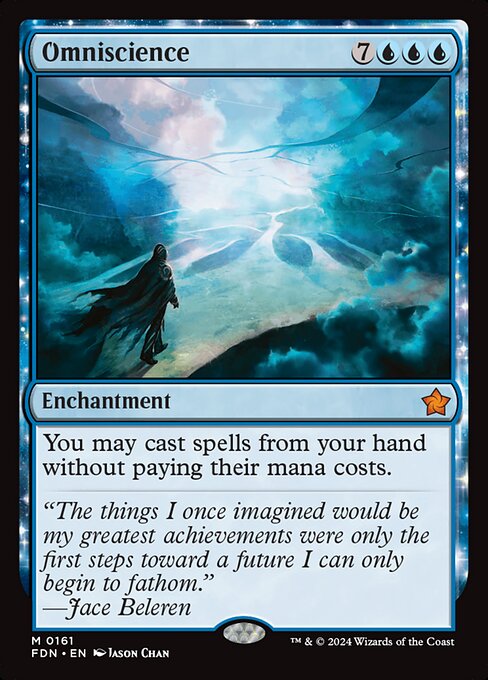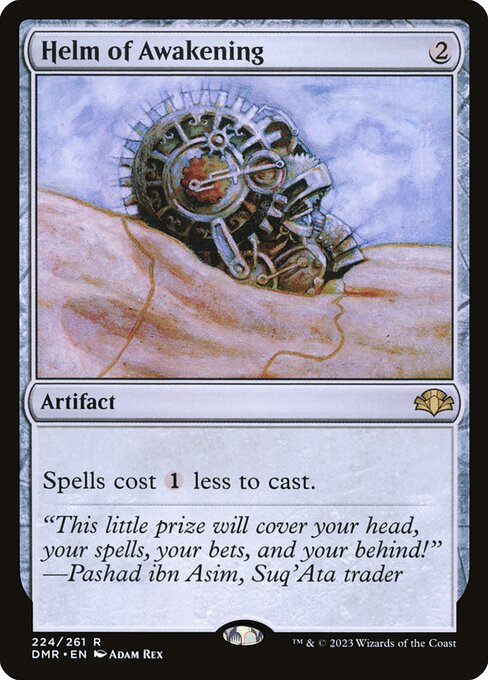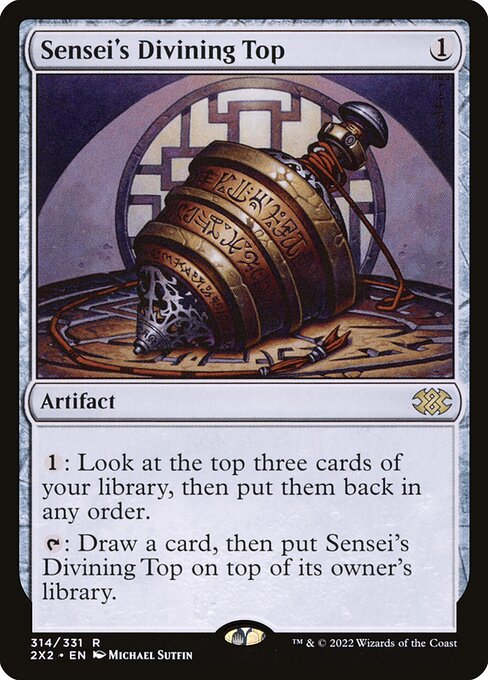There’s quite a few intriguing legendary creatures from Magic: The Gathering’s newest set: Wilds of Eldraine. The Wilds of Eldraine Commander decks contain a few more who pique my interest, but the first one which really caught my eye is today’s highlight. Welcome back to the Commander Corner, and today we’re talking about…

If you’ve followed my articles you might know I have a particular affinity for commanders who cost four mana and grant either mana or card advantage. The high density of playable two-mana rocks makes curving into a turn-three commander a reliable play pattern which allows for a great deal of consistency across games. This doesn’t mean every game will go the same way, but it does mean you have a strong foundation upon which to build your gameplan most of the time.
The Magic Number
Talion, the Kindly Lord offers you a lot of value up front. You get to see the mana value, power, and toughness of each other commander at the table as soon as you sit down to play. Just as well, if you’re in any way familiar with the decks you’ll be playing against, it can be easy to guess what the best number to choose will be for immediate value.
I’ve taken it upon myself to glance at the most commonly played creatures, spells, and commanders in the format to figure out what the best numbers to choose are. Of note, you’ll get the most value out of 2, 3, and trailing behind just a bit, 4. A lot of common mana rocks cost 2, along with a lot of modern-template one-to-three-mana creatures having 2 toughness. Many engine cards cost 3 mana, along with many popular commanders having a 3 in a relevant spot in their text box. 4 lags behind the other numbers a bit, but still has a lot of cards which will make Talion happy. Overall, in a vacuum, I’m choosing 3 at most tables.
Table Dynamics
Games will change drastically depending on how your playgroup plays around it. It’s easy to imagine a game where people don’t play cards that will let you draw a card, but it can be incredibly restrictive for those players. It’s also easy to imagine a game where players refuse to halt their own gameplans just to slow down your card draw. Knowing which of these you’re more likely to face would be helpful, but is hardly necessary.
Instead, I think you should change your strategy in-game to reflect how people are playing into/around Talion. If Talion is holding back a decent number of cards, you can try to play a more controlling long game, building up resources and trying to appear innocuous with all the extra time you’re getting. If you’re getting a lot of free draws, you can try to push through your more powerful plays every time you untap, forcing other players to devote resources to stopping your combos, which could trigger Talion.

Speeding Things Up?
Given the ways your opponents can define what Talion actually does in play, it pays to have a lot of flexibility in your decklist. The build I’m going to show you borders on being group-hug in nature, but first I’d like to address the idea of a more controlling version of this deck.
One great way to ensure Talion draws you cards, or that the game simply goes longer, is to make sure your opponents already have a lot of other tax, stax, and prison effects to think about. Cards like Standstill, Propaganda, Meekstone, and Frozen Aether can all slow things to a crawl in one way or another. Some of these are good, but instead, let’s try to turbo out as many extra Talion draws as we can. I think this is more reliable and fun.
Draw enough cards, and you can start to apply pressure with bigger spells like Rite of Replication, Omniscience, and Virtue of Persistence. Cards like Windfall and Ghirapur Orrery encourage opponents to empty their hands, and makes them more likely to trigger Talion additional times. It might seem like incentivizing opponents to play more spells will speed the game up too much, but balancing the extra speed with your own gameplan is the key to success.

Sticking The Landing
I’ve already mentioned Omniscience, which is a perfect finisher for this deck, but there’s a lot of other ways you can capitalize on all the extra spells and cards flying around the table. Of note, this is actually the perfect deck for a card like Memory Plunder.
Of course, if you really want to make things interesting, you can make non-legendary copies of Talion using cards like Spark Double in the hopes you’ll mill out, winning with Laboratory Maniac or Jace, Wielder of Mysteries. This might be a bit too fancy, though. Not the lab-man and Jace, just the copies.
Personally, I think everyone’s favorite giant blood laser, Aetherflux Reservoir, is the best way to end the game. After drawing a billion cards with Talion, wheel-effects, and more, it should be pretty simple to string together enough spells to get the job done if you’re creative enough. Even so, a little backup never hurts.

The List
I’d feel comfortable playing this at a lot of casual tables and I think there’s plenty of room for creativity, so feel free to experiment with your own version of this deck. Keep an eye out for some nifty cards I’ve included that you might not have thought about.
Commander
Creature – 13
- Notion Thief
- Faerie Mastermind
- Jace, Vryn’s Prodigy
- Rona, Herald of Invasion
- Laboratory Maniac
- Spellskite
- Rankle, Master of Pranks
- Ophiomancer
- Halo Forager
- Malevolent Hermit
- Psychosis Crawler
- Nettling Nuisance
- The Reality Chip
Artifact – 20
- Lightning Greaves
- Swiftfoot Boots
- Helm of Awakening
- Sensei’s Divining Top
- Bolas’s Citadel
- Aetherflux Reservoir
- Howling Mine
- Ghirapur Orrery
- Font of Mythos
- Temple Bell
- Collector’s Vault
- Sol Ring
- Arcane Signet
- Dimir Signet
- Talisman of Dominance
- Fellwar Stone
- Thought Vessel
- Sky Diamond
- Marble Diamond
- Meekstone
Enchantment – 10
- Teferi’s Ageless Insight
- Omniscience
- Dictate of Kruphix
- Forced Fruition
- Ghoulish Impetus
- Animate Dead
- Well of Ideas
- Propaganda
- Virtue of Persistence
- Court of Locthwain
Instant – 12
- Remand
- Arcane Denial
- Faerie Fencing
- Memory Plunder
- Negate
- Counterspell
- See Double
- Infernal Grasp
- Reality Shift
- Frantic Search
- Dig Through Time
- Mystical Tutor
Sorcery – 8
- Windfall
- Dark Deal
- Feed the Swarm
- Rite of Replication
- Ringsight
- Mirage Mockery
- Stolen Identity
- Saheeli’s Artistry
Land – 36
- Command Tower
- Underground River
- Exotic Orchard
- Drowned Catacombs
- Shipwreck Marsh
- Choked Estuary
- Tainted Isle
- Temple of Deceit
- Darkslick Shores
- Secluded Glen
- Path of Ancestry
- Evolving Wilds
- Terramorphic Expanse
- 12 Swamp
- 11 Island
That’s All, Folks
Truthfully, an ideal version of this deck is pretty expensive, but I did my best to balance power and budget. I think playing this deck at most casual tables will make games pretty exciting for you and other players, especially as the group-draw effects start to stack up. Of course, you can change this deck around to your liking as this is just a proof of concept, so feel free! This is only the first Wilds of Eldraine commander I’ll be covering, so be sure to tune in next time. Until then, though, I’ve been Luka “Robot” Sharaska, and this has been the Commander Corner.
Luka V. Sharaska (they/them) earned the nickname “Robot” by having a monotone voice, a talent for calculating odds, and a perfect poker face. Robot has been playing Magic for more than a decade, starting during the days of New Phyrexia in 2011.

